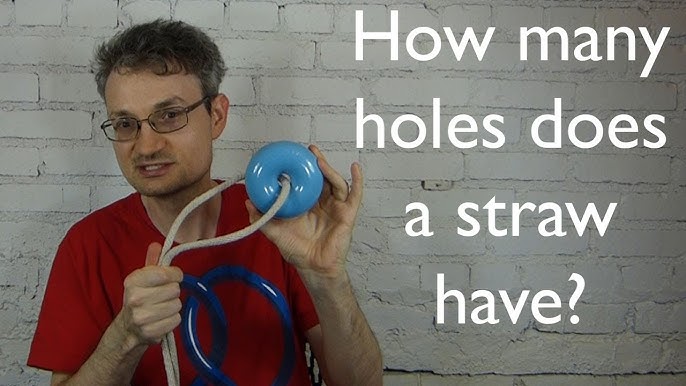How Many Holes Are in a Straw? A Comprehensive Exploration
The question of how many holes are in a straw has sparked considerable debate and discussion among people of all ages. While it may seem like a simple inquiry, it touches on concepts in mathematics, topology, and even philosophy. This article will delve into the various perspectives on this question, explore the mathematical principles behind it, and provide a thorough understanding of the topic.
Understanding the Concept of a “Hole”
Before we can answer the question of how many holes are in a straw, we need to define what we mean by a “hole.” In everyday language, a hole is often understood as an opening or a void in a solid object. However, in mathematics, particularly in topology, the definition of a hole can be more nuanced.
Types of Holes
- Physical Holes: These are tangible openings in objects, such as the hole in a donut or the openings at either end of a straw.
- Topological Holes: In topology, a hole refers to a feature of a shape that cannot be transformed into a solid without cutting or tearing. For example, a donut has one hole, while a sphere has none.
- Mathematical Holes: Mathematically, the concept of holes can be represented using Betti numbers, which are used to classify the number of holes in different dimensions.
The Debate: One Hole or Two?
The main debate surrounding the question of how many holes are in a straw typically revolves around two primary perspectives:
- One Hole Perspective: Proponents of this view argue that a straw has one continuous hole that runs from one end to the other. This perspective is supported by topological reasoning, which considers the straw as a cylindrical shape with a single opening.
- Two Holes Perspective: Those who argue that a straw has two holes often point to the fact that there are two distinct openings—one at each end of the straw. This viewpoint is more intuitive and aligns with everyday language.
Exploring the Mathematical Perspective
To understand the debate more deeply, we can turn to topology, a branch of mathematics that studies the properties of space that are preserved under continuous transformations.
Topological Analysis of a Straw
- Shape Representation: A straw can be represented as a cylinder. In topology, a cylinder is equivalent to a circle (the cross-section) extended along an interval (the length of the straw).
- Betti Numbers: The first Betti number of a shape indicates the number of holes. For a straw (cylinder), the first Betti number is 1, indicating one hole.
- Continuous Deformation: If you were to compress a straw into a flat shape, you would still recognize it as having one hole, reinforcing the idea that it is topologically equivalent to a single hole.
Visualizing the Concepts
To better understand the concepts of holes in a straw, consider the following visual representations:
| Shape | Description | Number of Holes |
|---|---|---|
| Straw (Cylinder) | A long, hollow tube with openings at both ends. | 1 |
| Donut (Torus) | A shape with a central hole through its body. | 1 |
| Sphere | A perfectly round object with no openings. | 0 |
| Washer | A flat ring with a hole in the center. | 1 |
The Cultural Impact of the Debate
The debate over how many holes are in a straw has transcended mathematical discussions and entered popular culture. It has been featured in various media, including social media platforms, videos, and articles. This question often serves as a fun icebreaker or conversation starter, allowing people to engage in light-hearted debates.
Scientific Studies and Polls
Surveys and polls have been conducted to gauge public opinion on the question. For example, a YouGov survey in the UK found that opinions were fairly evenly split, with some people believing there is one hole and others insisting on two. This illustrates the subjective nature of the question and how personal interpretation can influence answers.
Conclusion
In conclusion, the question of how many holes are in a straw is not as straightforward as it may seem. While the intuitive answer might suggest there are two holes due to the openings at each end, a deeper analysis through the lens of topology reveals that a straw has one continuous hole. This debate highlights the intersection of language, mathematics, and perception, making it a fascinating topic for discussion.
FAQ
- How many holes are in a straw?
- Mathematically, a straw has one continuous hole that runs from one end to the other.
- Why do some people think there are two holes?
- Some people argue that because there are two openings at each end of the straw, it should be considered as having two holes.
- What is topology?
- Topology is a branch of mathematics that studies the properties of shapes and spaces that are preserved under continuous transformations.
- What are Betti numbers?
- Betti numbers are used in topology to classify the number of holes in different dimensions of a shape.
- How can I visualize the concept of holes in a straw?
- You can think of a straw as a cylinder; when compressed, it still retains its identity as having one hole.
- Are there any scientific studies on this topic?
- Yes, polls and surveys have been conducted to gauge public opinion on how many holes are in a straw, revealing a split in beliefs.
- What other shapes have holes?
- Common shapes with holes include donuts (1 hole), washers (1 hole), and toruses (1 hole). A sphere has no holes.
- Why is this debate popular?
- The debate is popular because it combines elements of humor, mathematics, and everyday language, making it an engaging topic for discussion.
- Can the answer change based on context?
- Yes, the interpretation of “holes” can vary based on context, whether discussing in mathematical terms or everyday language.
- Where can I find more information on this topic?
- For more information, you can refer to educational resources or articles on mathematical topology.



